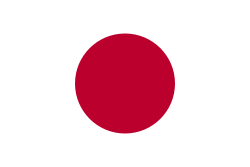Japan Unveils Advanced Railgun to Counter Hypersonic Missiles
 Japan
JapanTakeshi Ebisawa, a prominent leader of the Japanese Yakuza, has pleaded guilty to charges related to the trafficking of nuclear materials sourced from Myanmar. U.S. authorities reported that Ebisawa conspired to sell weapons-grade nuclear material with intentions to fund an illicit arms deal.
Previously charged with drug trafficking and firearms offenses in April 2022, Ebisawa faced additional charges in February 2024 for conspiring to sell both nuclear materials and narcotics from Myanmar. Prosecutors claim that the nuclear materials included weapons-grade plutonium, purportedly aimed for use by Iran in developing nuclear capabilities.
In court, acting U.S. Attorney Edward Kim stated that Ebisawa “brazenly trafficked” nuclear material along with heroin and methamphetamine, intending to exchange them for heavy weaponry, including surface-to-air missiles. Ebisawa reportedly provided evidence of his access to nuclear materials, showing photographs alongside Geiger counters indicating radiation levels.
Law enforcement operations, aided by Thai authorities, resulted in the seizure of substances Ebisawa labeled as “yellowcake,” a uranium concentrate. The Justice Department confirmed that the plutonium found was indeed weapons-grade.
Ebisawa, 60, faces a potential sentence of up to 20 years in prison for his actions. Prosecutors characterized him as a leader of a highly organized, transnational criminal network known for extensive narcotics and weapons trafficking. Sentencing will be determined at a future hearing.
 Japan
Japan Japan
Japan Japan
Japan